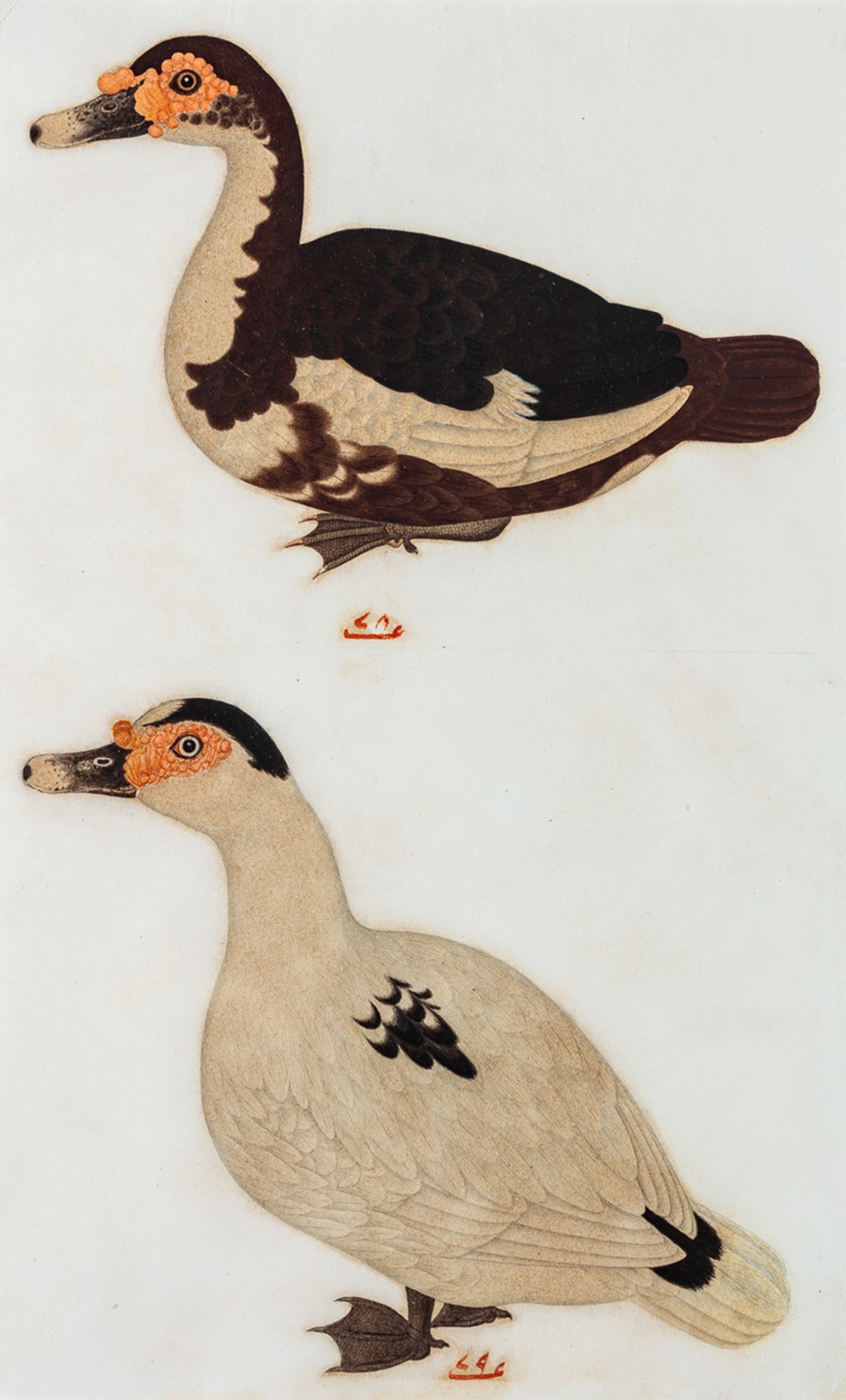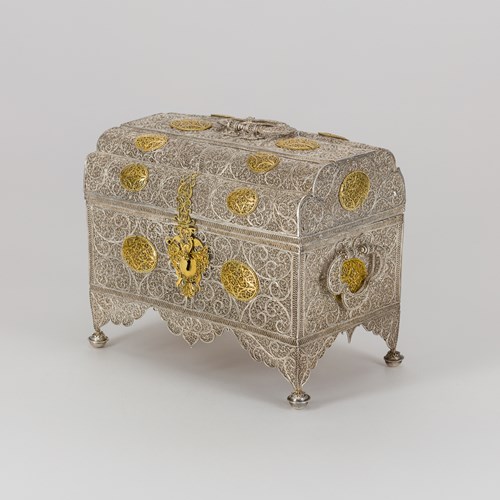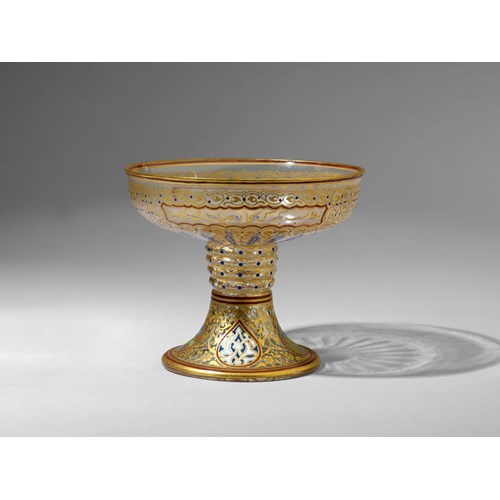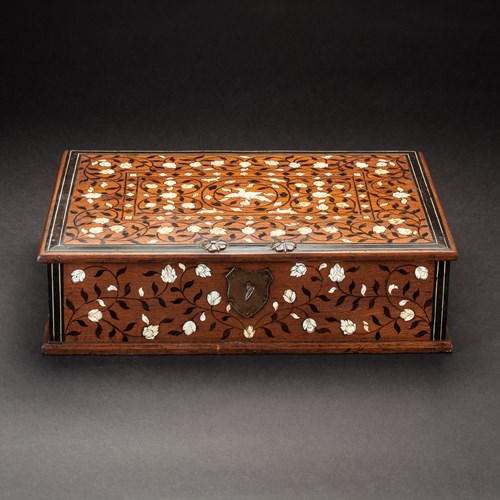Marketplace
Company School Painting of Two Ducks
Company School Painting of Two Ducks
Period 19th century
Origin India
Medium Watercolour on paper
Dimension 29 x 18 cm (11³/₈ x 7¹/₈ inches)
This wonderfully detailed study truly encapsulates the inquisitive nature and unique character of the Muscovy duck.
At the top of the folio, the male has a white neck and wing feathers while his head, nape and back shimmer with iridescent black plumage. His freckled grey beak fades to pink, with a dash of black at the tip. Distinctive red wattles surround the bill and eye; these markings typify the breed and are more pronounced amongst the males. Below, the female is primarily white, with elegant dashes of black on her crown, back and tail feathers.
Demonstrating a closely observed familiarity with the breed, the artist has presented the male resting on his haunches while the female appears with her head raised as her sharp eyes keep watch over the pair.
Originating from South America, Muscovy ducks were brought to Europe in the 16th century on Columbus' ship the Santa Maria. In 1612 the Mughal Emperor Jahangir was presented with a bird he’d never seen before. Muqurrab Khan, a high-ranking court official gifted him a turkey, which he acquired from Portuguese merchants in Goa. It is possible that Muscovy dusks were brought to India around this time, as animals and birds from North and South America arrived on Spanish and Portuguese vessels and made fine, and sometimes extraordinary diplomatic gifts.
The present work would have appeared within an album of ‘Company School’ paintings, as Europeans working in India employed the most experienced local artists to record the likenesses of flora and fauna. These paintings were then bound into albums that formed treasured private collections, or were donated to museums and scholarly organisations.
References
Bikram Grewal et al. 2016. Birds of India - A Pictorial Field Guide. Om Books International.
Neha Vermani. 2020. The turkey’s journey from the Atlantic to the early modern Islamic world in Shakespeare and Beyond. Folger Shakespeare Library Magazine. Washington DC.
Stock No.: A5374
At the top of the folio, the male has a white neck and wing feathers while his head, nape and back shimmer with iridescent black plumage. His freckled grey beak fades to pink, with a dash of black at the tip. Distinctive red wattles surround the bill and eye; these markings typify the breed and are more pronounced amongst the males. Below, the female is primarily white, with elegant dashes of black on her crown, back and tail feathers.
Demonstrating a closely observed familiarity with the breed, the artist has presented the male resting on his haunches while the female appears with her head raised as her sharp eyes keep watch over the pair.
Originating from South America, Muscovy ducks were brought to Europe in the 16th century on Columbus' ship the Santa Maria. In 1612 the Mughal Emperor Jahangir was presented with a bird he’d never seen before. Muqurrab Khan, a high-ranking court official gifted him a turkey, which he acquired from Portuguese merchants in Goa. It is possible that Muscovy dusks were brought to India around this time, as animals and birds from North and South America arrived on Spanish and Portuguese vessels and made fine, and sometimes extraordinary diplomatic gifts.
The present work would have appeared within an album of ‘Company School’ paintings, as Europeans working in India employed the most experienced local artists to record the likenesses of flora and fauna. These paintings were then bound into albums that formed treasured private collections, or were donated to museums and scholarly organisations.
References
Bikram Grewal et al. 2016. Birds of India - A Pictorial Field Guide. Om Books International.
Neha Vermani. 2020. The turkey’s journey from the Atlantic to the early modern Islamic world in Shakespeare and Beyond. Folger Shakespeare Library Magazine. Washington DC.
Stock No.: A5374
Period: 19th century
Origin: India
Medium: Watercolour on paper
Dimension: 29 x 18 cm (11³/₈ x 7¹/₈ inches)
Provenance: UK private collection for the past 30 years
More artworks from the Gallery









, A FORLORN HEROINE_T638411865822887245.jpg?width=500&height=500&mode=pad&scale=both&qlt=90&format=jpg)